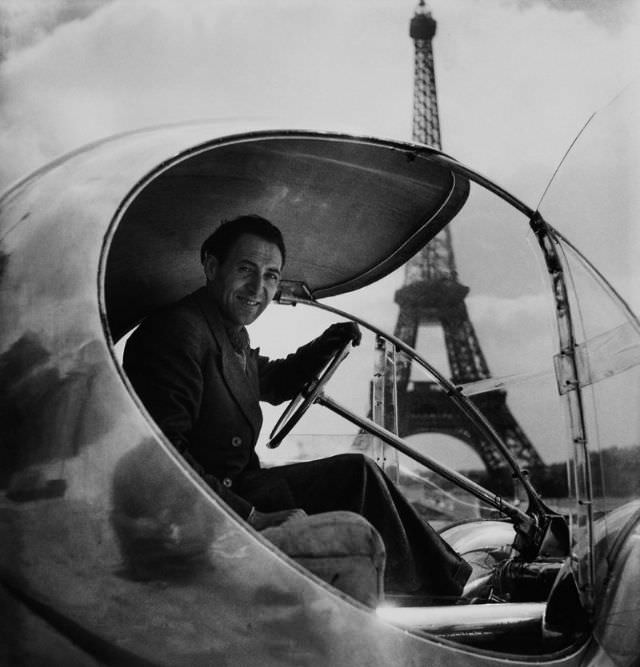In 1942, amidst the dark days of World War II, a futuristic and intriguing vehicle came to life—L’Œuf électrique, also known as “The Electric Egg.” Created by French industrial designer Paul Arzens, this electric cyclecar has a rich history and innovative design elements that remain captivating to this day.
Early Concept and Design
Paul Arzens, born in 1903, was an industrial designer with a penchant for forward-thinking ideas. In 1938, he conceived the design for L’Œuf électrique, drawing inspiration from various sources like interwar cyclecars and the bionic shapes of an egg or a drop of water. However, it wasn’t until 1942 that the vehicle was actually built, driven by the need to circumvent fuel rationing during World War II in occupied France.
Structural Marvel
The car’s unique design featured a spherical aluminum body over a chassis formed from a tube of Duralinox, a type of aluminum alloy. One of its standout elements was the windscreen, made of curved Plexiglass, a material that was also used for the doors. The car weighed around 350 kilograms (770 lb), most of which came from its five 12-volt batteries located under the bench seat.
Navigating Fuel Rationing with Innovation
To cope with the restrictions imposed by the German military administration, Arzens opted for an electric motor. This motor was powered by the five 12-volt batteries, each having a capacity of 250 ampere-hours and weighing 60 kilograms (130 lb). Despite the limitations, the car could reach a top speed of 70 kilometers per hour (43 mph) and had an impressive range of 100 kilometers (62 miles).
Once World War II ended and fuel rationing was no longer an issue, Arzens decided to swap out the electric motor. He replaced it with a 125 cc (7.6 cu in) Peugeot single-cylinder petrol engine that produced 5.5 horsepower (4.1 kW). This modification led to an increase in the vehicle’s top speed, bumping it up to 80 kilometers per hour (50 mph).
Acquisition and Current Status
After serving its purpose and turning heads for years, L’Œuf électrique was acquired by the Musée des Arts et Métiers in Paris in 1993. Today, it enjoys its place in the spotlight at the Cité de l’Automobile in Mulhouse, Alsace, where it continues to fascinate auto enthusiasts and historians alike.
















